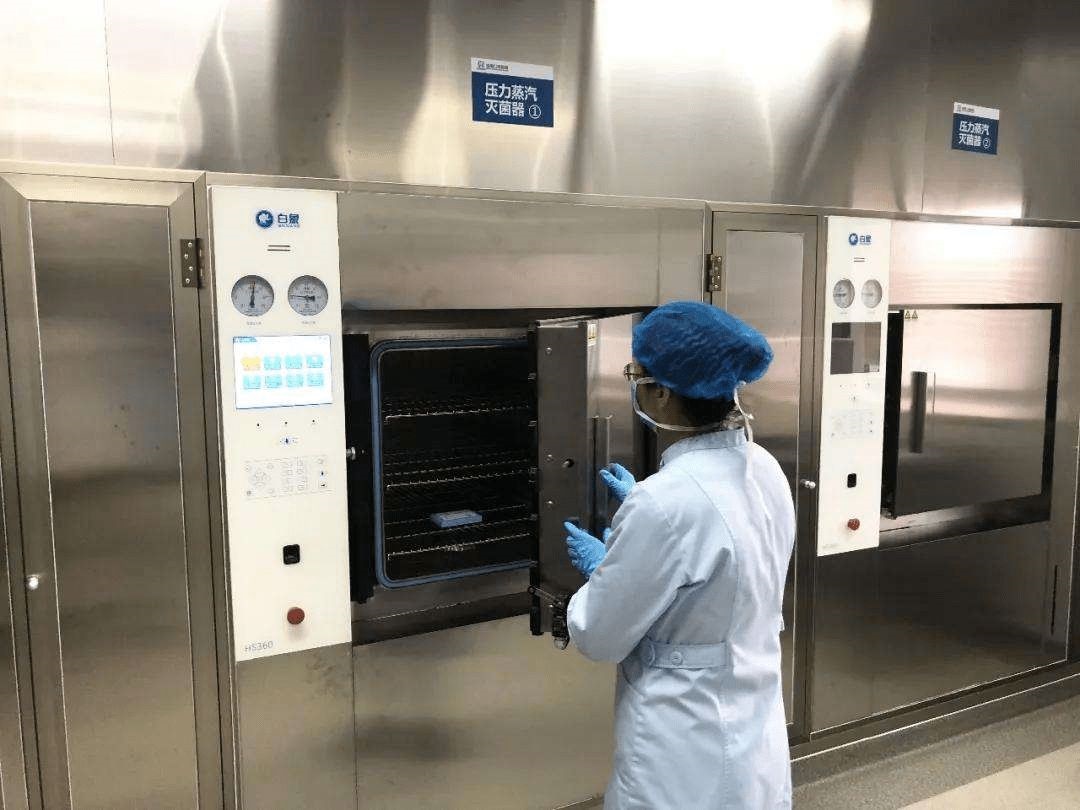MFS-96000BQ 带植绒头和 PS 手柄的鼻拭子?
2022-01-25

灭菌是利用物理或化学方法消灭包括大量耐药细菌芽孢在内的所有微生物. 使其无菌,避免使用过程中感染和疾病传播.
常见的医疗灭菌方法包括: 干热灭菌, 湿热灭菌, 气体灭菌, 辐射灭菌, 过滤除菌, 等等. 下面简单介绍一下这些灭菌方法
干热灭菌
将物品放入干热灭菌柜中 (盒子), 并利用干热空气杀灭微生物或消除致热物质.
适用范围: 玻璃器皿, 金属器皿, 以及耐高温但不宜采用湿热灭菌法灭菌的物品均可采用该方法灭菌。.
干热灭菌条件一般为 (160-170℃)×120分钟以上, (170-180℃)×60min以上或250℃×45min以上.
使用干热灭菌时, 待灭菌物品应有合适的装载方式,不宜排列过密,以保证灭菌的有效性和均匀性.
干热灭菌最常用的生物指示剂是枯草芽孢杆菌孢子.
湿热灭菌
将物品放入灭菌器中杀死微生物的方法 (锅), 利用高压饱和蒸汽使微生物细胞内的蛋白质和核酸变性. 该方法灭菌能力强,是热力灭菌中最有效、应用最广泛的灭菌方法。.
适用范围: 缓冲液, 培养基, 干净的衣服, 玻璃器皿, 传染性污垢和其他暴露在高温和高湿度下不会改变或损坏的物品.
湿热灭菌通常采用121℃×15min或121℃×30min. 灭菌期间, 灭菌物品应以适当的方式装载, 且不宜排列过密,以保证灭菌的有效性和均匀性.
湿热灭菌最常用的生物指示剂是嗜热脂肪芽孢杆菌孢子.
气体灭菌
利用化学消毒剂形成的气体杀灭微生物. 气体灭菌可细分为臭氧灭菌和环氧乙烷灭菌.
1. 臭氧灭菌消毒
臭氧具有很强的杀菌消毒作用. 灭菌消毒的原理是: 常温常压下臭氧分子结构不稳定, 并迅速分解成氧气和单个氧分子. 后者活性强,对细菌有很强的氧化作用. 细菌中氧化葡萄糖所必需的酶, 从而破坏它们的细胞膜, 杀死它.
2. 环氧乙烷灭菌 (排队) 方法
环氧乙烷灭菌是利用环氧乙烷气体进行灭菌的方法。. 是一种传统的灭菌方法,可应用于工作服的灭菌, 医疗器械, 设施, 以及不耐高温灭菌的设备. 环氧乙烷灭菌系统主要有以下四个相互制约灭菌效果的重要因素:
①湿度; ②温度; ③气体浓度; ④灭菌时间.
环氧乙烷具有很强的渗透和扩散能力, 其杀菌机理主要是强氧化, 因此具有杀菌广谱、杀菌能力强的特点, 对微生物繁殖体、芽孢有较强的杀灭作用. .
辐射灭菌
1. 电离辐射
用电离 X 射线消毒, 伽马射线.
电离辐射对微生物的致死作用主要是由于细胞内生物化学的变化引起的.
辐照药品和食品的安全问题: 药品或食品的辐射灭菌应经过安全测试. 进行科学、全面的评价是绝对必要的, 高剂量辐射应谨慎使用.
2. 电磁波辐射
(包括紫外线 [波长190~350nm], 红外线的 [波长0.77~1000μm], 微波 [波长1~1000mm]).
3. 紫外线杀菌
当紫外线照射微生物时, 发生能量转移和积累, 积累导致微生物失活, 从而达到消毒的目的. 当细菌、病毒吸收剂量超过3600~65000uW/c㎡时, 对脱氧核糖核酸有很强的破坏力 (脱氧核糖核酸) 和核糖核酸 (核糖核酸) 细菌和病毒的, 这会使细菌和病毒失去生存能力和繁殖能力. 消除细菌、病毒,达到消毒灭菌的效果.
过滤除菌
以物理方式去除培养基中的微生物. 空气或液体中的微生物和杂质常采用不同材料制成的膜过滤器进行过滤,以获得无菌, 无杂质的空气或液体.
过滤病毒的滤膜孔径为 25 〜100纳米; 过滤细菌的滤膜孔径为 0.22 ~0.45μm
详细了解这五种常见灭菌方法后, 我们整理了一个汇总表,方便大家更清楚的区分
工作条件, 各种灭菌方法的适用范围及局限性.
















